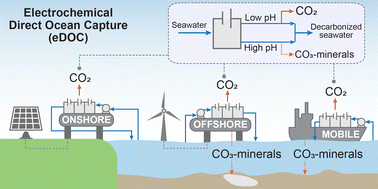Direct ocean capture: the emergence of electrochemical processes for oceanic carbon removal
Abstract
The urgent need for effective climate change mitigation has spurred the exploration of various negative emission technologies (NETs). Here, we investigate recent advancements and challenges in electrochemical direct ocean capture (eDOC) of carbon dioxide (CO2), a promising NET for oceanic carbon removal. We analyze different eDOC strategies, focusing on pH swing as the primary mechanism for ocean dissolved inorganic carbon removal, and examine techno-economic challenges, such as achieving industrially preferred current densities and reducing overall costs. Early designs have relied on bipolar membrane electrodialysis, while recent developments have eliminated the need for membranes entirely. We compare different approaches, highlighting the limitations of current eDOC systems. Our study provides insights into the optimization of eDOC systems, suggesting further research is needed to improve system efficiency and address design bottlenecks for large-scale deployment. Ultimately, these advancements will play a crucial role in realizing the full potential of eDOC as an economically viable and environmentally sustainable NET for mitigating climate change.



 Please wait while we load your content...
Please wait while we load your content...